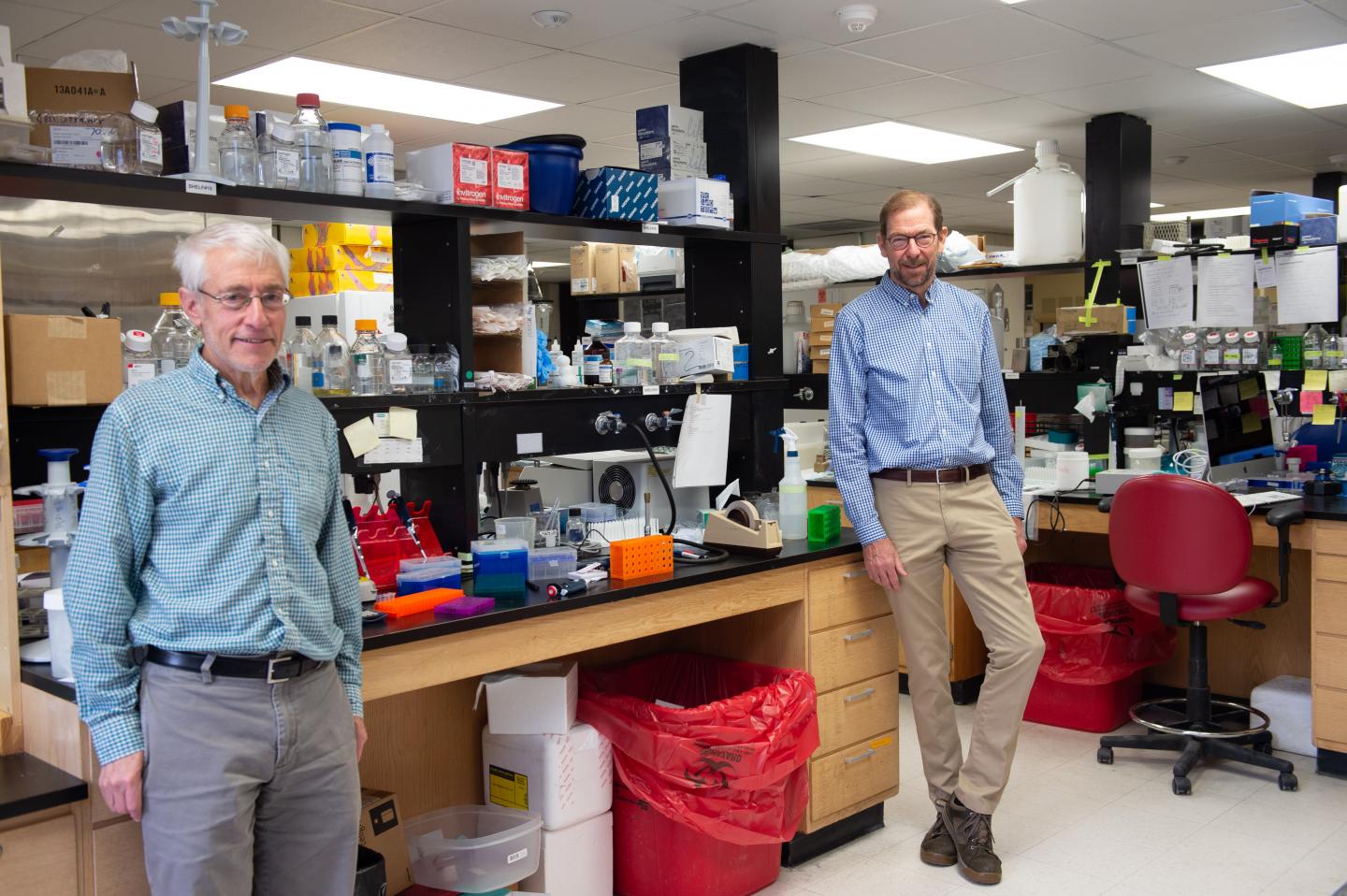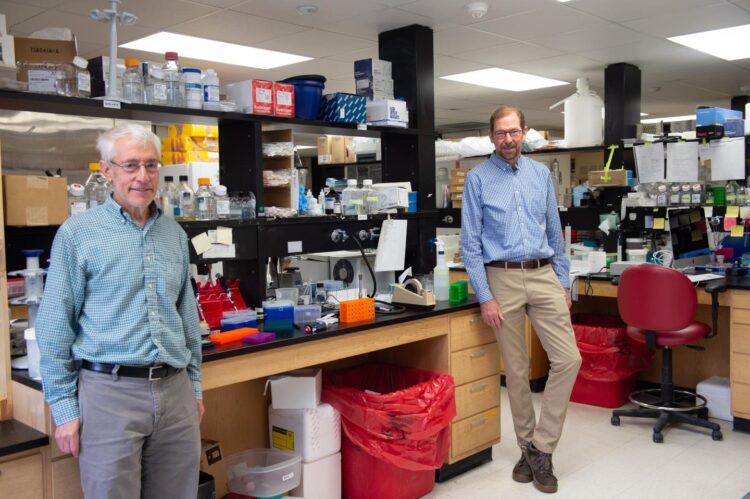University of Iowa team makes gene therapy approach freely available for COVID-19 research

Credit: University of Iowa Health Care
Until there are effective treatments or vaccines, the COVID-19 pandemic will remain a significant threat to public health and economies around the world. A major hurdle to developing and testing new anti-viral therapies and vaccines for COVID-19 is the lack of good, widely available animal models of the disease.
Researchers at the University of Iowa Carver College of Medicine and Medical University, Guangzhou, in China, have developed a simple tool to overcome that bottleneck. The researchers have created a gene therapy approach that can convert any lab mouse into one that can be infected with SARS-CoV-2 and develops COVID-like lung disease. The international team, led by Paul McCray, MD, and Stanley Perlman, PhD, at the UI, and Jincun Zhao, PhD, at Medical University, Guangzhou, have made their gene therapy vector freely available to any researchers who want to use it.
“There is a pressing need to understand this disease and to develop preventions and treatments,” says McCray, UI professor of pediatrics, and microbiology and immunology. “We wanted to make it as easy as possible for other researchers to have access to this technology, which allows any lab to be able to immediately start working in this area by using this trick.”
The “trick” is the use of an adenovirus gene therapy vector that is inhaled by the mice to deliver the human ACE2 protein into mouse airway cells. This is the protein that SARS-CoV-2 uses to infect cells. Once the mouse airway cells express the hACE2 protein, the mice become susceptible to infection with SARS-CoV-2 and they develop COVID-19-like lung symptoms. Although the disease is not fatal in the mice, the animals do get sick, losing weight and developing lung damage. Importantly, the vector is readily adaptable to any strain of mice (and other lab animals), which means research teams can rapidly convert mice with specific genetic traits into animals that are susceptible to SARS-Cov-2, allowing them to test whether those traits influence the disease.
Reporting in Cell, the researchers showed that mice treated with this gene therapy could be used to evaluate a vaccine and several potential COVID-19 therapies, including a preventative strategy known as poly I:C, which boosts the innate immune response, convalescent plasma from recovered COVID-19 patients, and the anti-viral drug remdesivir. In each case, the therapies prevented weight loss, reduced lung disease, and increased the speed of virus clearance in the mice. The team also showed mice are useful for studying important immune responses involved in clearing the SARS-CoV-2 virus.
Mice are the most commonly used experimental animal for studying human disease in the lab because they are accessible, inexpensive, and easy to use. They are also one of the easier animal models to use in biosafety level three environments, which are needed for work on COVID-19. However, due to differences between the human and mouse ACE2 protein, wild-type mice are not susceptible to the SARS-Cov-2 virus.
The gene therapy vector is essentially an off-the-shelf tool that allows labs to create their own COVID-19 mouse model within a few days. McCray, Zhao, and Perlman developed this approach in 2014, when Zhao was a postdoctoral researcher in Perlman’s UI lab, to create mouse models of MERS.
“You can create these mice very quickly. You don’t have to breed the strain, which is very time consuming and expensive,” McCray explains. “We think this technology will be useful for investigating COVID-19 lung disease and rapidly testing interventions that people think are promising for treating or preventing COVID-19.”
###
McCray credits the UI’s long-standing expertise in gene therapy vector development as a basis for this advance. The vector was made in the University of Iowa Vector Core, which is an outgrowth of the UI Center for Gene Therapy for Cystic Fibrosis funded by the National Institutes of Health. The vector is freely available through the BEI Resources Repository at the National Institute of Allergy and Infectious Diseases (NIAID).
The research was supported by the grants from the NIH (AI060699 and AI129269 and DK-54759), and the Cystic Fibrosis Foundation. Zhao and his team also received funding from several Chinese governmental organizations. McCray also is supported by the Roy J. Carver Charitable Trust.
Media Contact
Jennifer Brown
[email protected]
Related Journal Article
http://dx.





